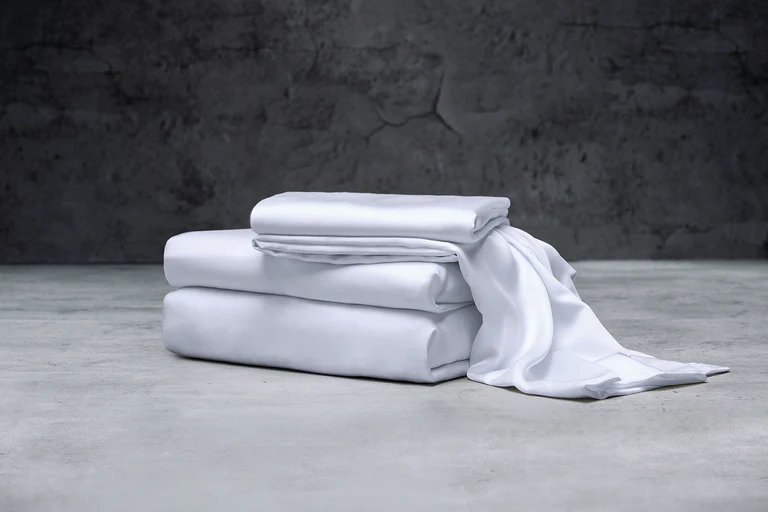Comment sélectionner la meilleure couverture lestée pour votre confort de sommeil?
Sleepers who sometimes wake up feeling like they’ve wrestled their comforter all night or feel more exhausted than they were the night before might find a weighted blanket improves their sleep. If you suffer from insomnia, experience fitful sleep, or merely enjoy the sensation of being hugged to sleep, a weighted blanket could be the missing puzzle piece for a full night of regenerative slumber.
Since weighted blankets are popular sleep aids, finding what you need in a sea of similar-looking products can be overwhelming. The best weighted blanket is a question of personal taste, but also of quality materials and design. Read on for our top tips and recommendations.
Before You Buy a Weighted Blanket
Weighted blankets are not for the faint of heart, literally. Anyone suffering from chronic respiratory or circulatory issues should think twice before purchasing this product. Excessive weight can restrict airflow or blood circulation. When in doubt, consult a doctor first.
According to their manufacturers, weighted blankets reduce anxiety, stress, and insomnia. With that said, weighted blankets should never replace therapy or treatment. You should treat the blanket as another tool in your sleep-aid kit, not as a cure.
Finally, children under the age of 3 years or weighing less than 50 pounds should avoid using weighted blankets entirely. The weight can lead to suffocation and even choking if filler beads leak. Always be mindful of age and weight when purchasing a blanket for your child.
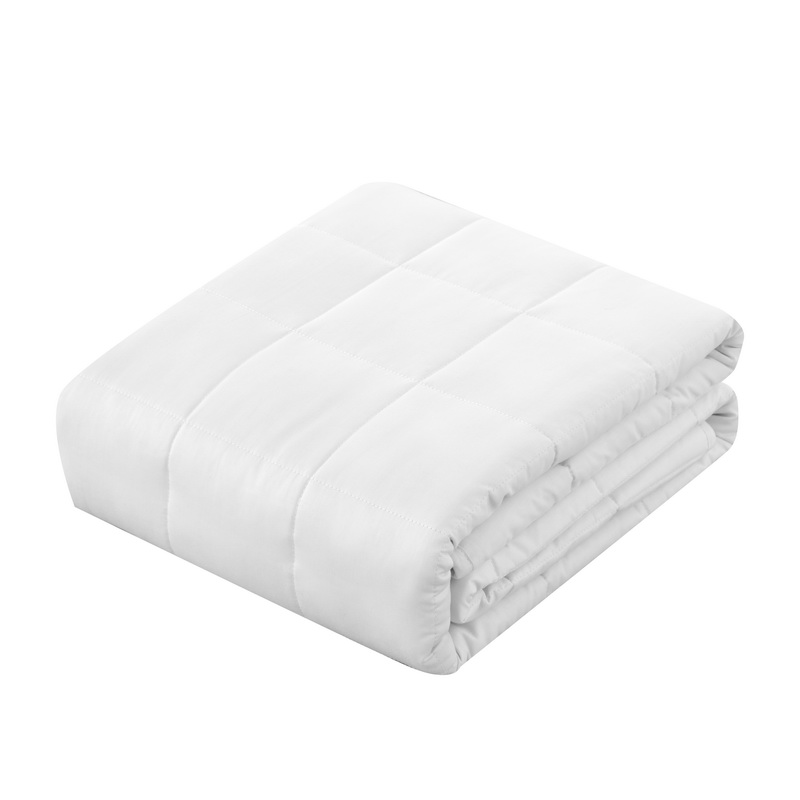
Types of Weighted Blankets
Fabric is a weighted blanket’s first line of defense. It’s what users will snuggle with at night, and texture is a merciless deal breaker. Before saying aye to the textile, pay attention to the properties of each option.
Cotton
Cotton is classic. It’s inexpensive, strong, and easy to clean. It’s convenient for manufacturers and for customers who want an affordable and machine-washable product. Plus, cotton is natural and breathable, which is great for sensitive skin and hot sleepers alike.
Some might deem cotton—dare we say—boring. That would, however, disregard cotton’s versatility. It can be morphed into anything, from ringspun cotton to chenille.
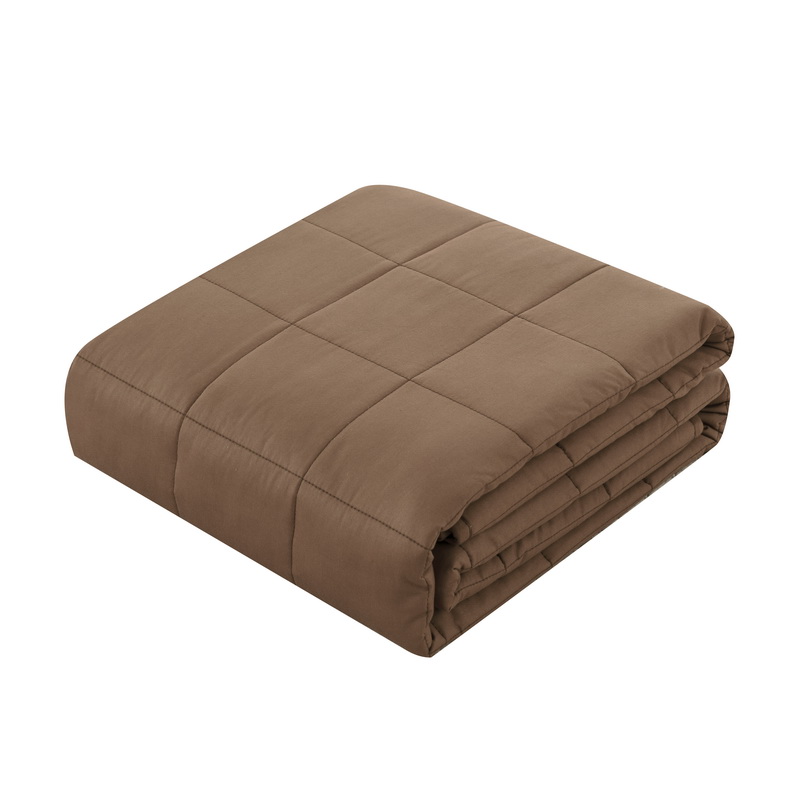
Flannel
Speaking of cotton’s versatility, flannel is yet another fabric derived from the material. It stands out as a softer, comfier, and warmer alternative. Flannel’s insulating properties keep it breathable, and—contrary to popular belief—it comes in solids and patterns other than plaid.
Of course, flannel proves less convenient for warmer climates and hot sleepers. Also know that pilling can be an issue with flannel blankets.
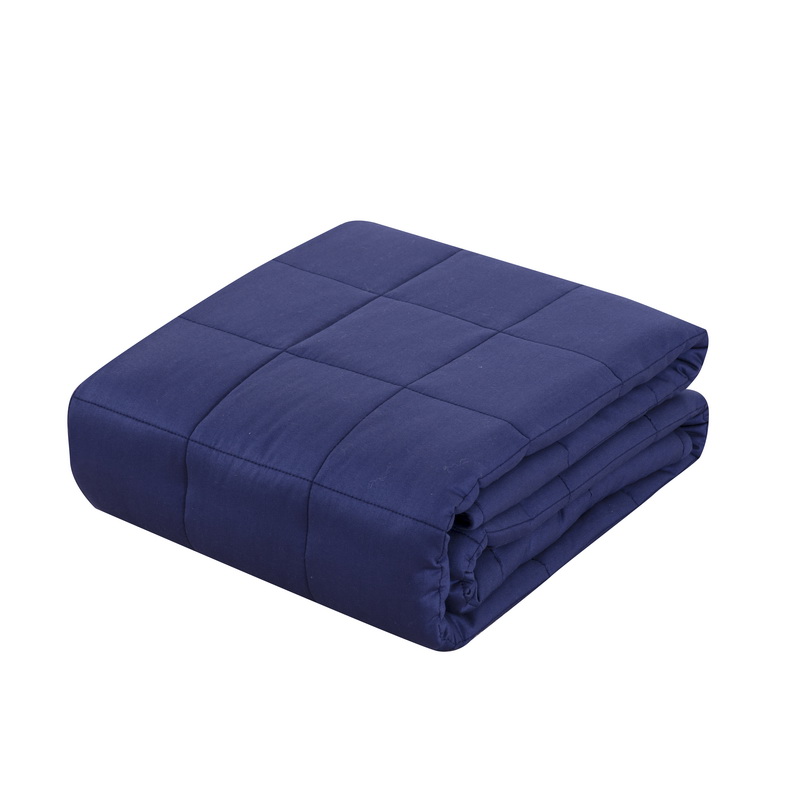
Minky
Minky is what dreams are made of—or at least, what you subconsciously remember from your naps as a child. It’s the fleece material used often in baby blankets, and it’s known for being soft, chaud, and the epitome of comfort.
Minky is, however, more fragile than traditional sturdy cotton. You will have to follow washing instructions carefully to prevent shedding or fraying. Choose minky weighted blankets for chilly nights, but not necessarily for hot sleepers.
Fleece
Fleece is a synthetic fabric with all the warmth and coziness of minky and flannel. It typically offers more print variety than minky, and is more machine washable than flannel. If you display any skin sensitivities, however, a natural alternative might be more prudent.
Rayon
Rayon is a fiber made from wood or agricultural products. It is soft, silky, and breathable. Rayon proves a wise choice in a weighted blanket for warmer months, but possibly feels too cool for chilly nights. If you love the feel of silk or wool but don’t want to break the bank, rayon provides a great alternative.
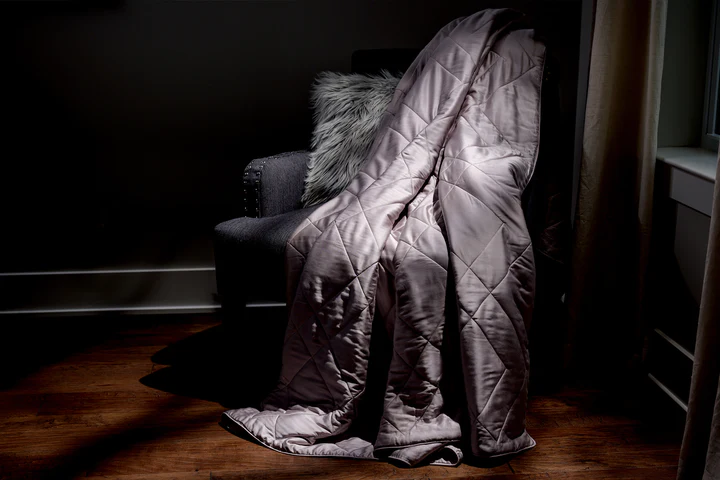
Linen
Linen is known for being lightweight and breathable. It is perfect for warmer climates. Like cotton, linen is a plant-based, natural, and low-maintenance fabric. That being said, it wrinkles easily, and is also not the ideal option for freezing weather.
Microfibre
Microfiber is not only plush and cozy, but flexible, durable, and wrinkle resistant. It is washing machine friendly and it dries quickly. The flipside? Microfiber is a synthetic material. As a result, this isn’t the best choice in a weighted blanket for buyers with sensitive skin. Plus, if you cherish sustainable development, microfiber production ties to fossil fuels, so no brownie points there.
What to Consider When Choosing the Best Weighted Blanket
Weighted blankets are on the pricier side as blankets go, so buyers should make sure their investment is worth the price they’re paying. Before adding a product to your cart, check the following.
Weight
These blankets are not one-weight-fits-all products, and though that complicates the selection process, it is good news for sleep and comfort. Most weighted blankets on the market range from 5 to 30 pounds. Manufacturers typically recommend a blanket that runs between 5 et 10 percent of the sleeper’s weight. This is not a hard and fast rule. It’s been suggested that heavier blankets—typically around 12 percent—provide more calming effects.
The key? Be Goldilocks. You want your weighted blanket to feel neither too light nor too heavy: you want it just right. Try different weights until you find the right one for you by taking advantage of trial periods when available. Make sure you can move under the blanket and that your airflow is unrestricted. It should feel like a cozy embrace, not a gripping hold.
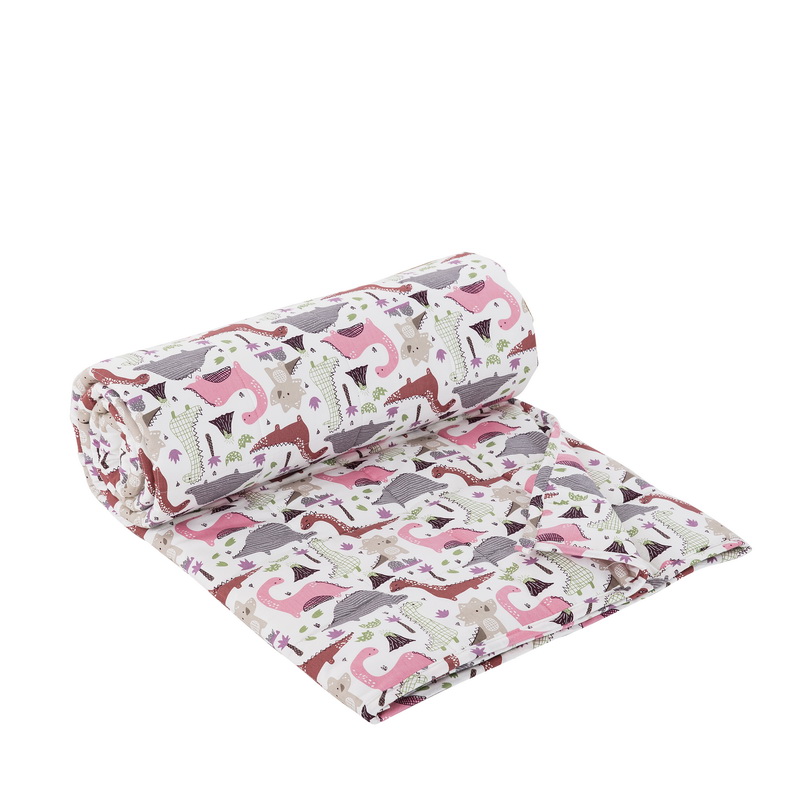
Remplissage
No reasonable amount of feathers or cotton will make a blanket weigh 20 pounds. Manufacturers of the best weighted blankets use much heavier filler materials than traditional bedspreads. Common types of filling include:
Plastic poly pellets: Cost-effective and flexible, plastic poly pellets are a popular choice. They are non-toxic and usually safe to wash. The pellets are not, however, ideal for sensitive skin. In addition, plastic poly pellets are not the most durable nor the quietest option.
Micro glass beads: As a smoother and natural alternative, micro glass beads get a much better rap. They are eco-friendly, hypoallergenic, and usually machine washable. Glass bead filling costs more, but also ranks heavier—and thus more efficient—than plastic poly pellets.
Steel shot beads: Like glass beads, steel shots are smoother and heavier than plastic. Larger in size, they also are less likely to slip through the stitches. The beads do not collect dirt, hence keeping the blanket durably clean. The main drawback? They might be the noisiest option on this list.
No filling: Some weighted blankets use no filling at all. Instead, they derive weight from a massive amount of thickly knitted yarn. It makes for more consistent weight distribution and for a clean and crisp look. Unfortunately, they are among the most expensive weighted blankets on the market.
In the end, it comes down to your budget, your personal preference on texture, and any skin or auditory sensitivities you might have.
Cooling
Most weighted blanket designs favor breathability, but some people are walking radiators. If you experience unpredictable hot flashes or just break into a sweat during the night, you’ll want a blanket with cooling properties.
Fabrics such as cotton, rayon, or linen are better choices for hot sleepers and warm evenings. Knitted blankets (with no filling) also tend to be more breathable due to their chunky-knit design. Synthetic fibers and quilted blankets, on the other hand, cannot circulate air as well. If the one you like proves a little too warm, adding a removable cover in a lighter fabric might solve your problem.
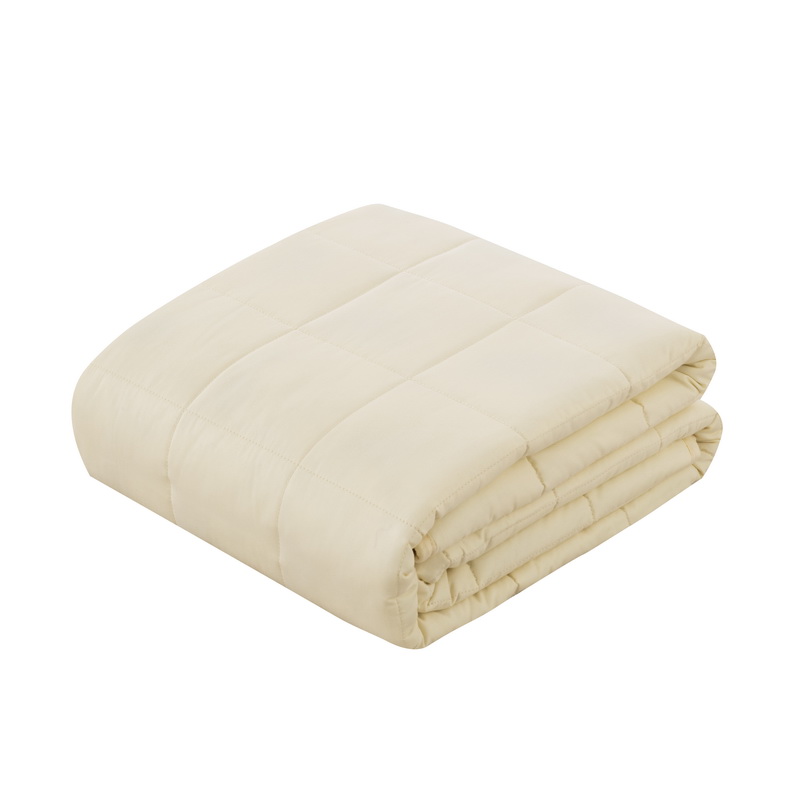
Padding
Some designs include additional padding between the outer layer and filling. This adds plush and comfort and helps to silence noisier fillers like plastic poly pellets or steel shot beads. In general, thicker blankets are better suited to colder climates, and thinner ones are more suitable for warmer environments.
Common materials used for padding include cotton, polyester, fleece, and chenille. Since the padding does not come in direct contact with your skin, you need to consider the padding’s breathability and durability.
Cotton is breathable and cool, but also absorbent—which is bad news if you have pets or if you sweat profusely. Polyester, on the other hand, is water-resistant, and just as breathable. Fleece and chenille are both moisture-proof choices, but probably too warm for hot sleepers. Chenille, like cotton, is a plant-based material.
Taille
Some brands offer one size at multiple weight points, and others provide a wider range of options. Decide if the weighted blanket is for your bed, the couch, or both. Think about whether it will stay in one place, or travel with you. Size also matters when deciding whether the weighted blanket is for your use only, or to share with your special someone.
Multiple brands provide sizes in line with mattress dimensions. If you share a blanket with a partner, make sure both of you are comfortable with the same weight. Also note that larger blankets mean a more widely distributed weight. If you are indecisive, check if the company offers a trial period to set your mind at ease.
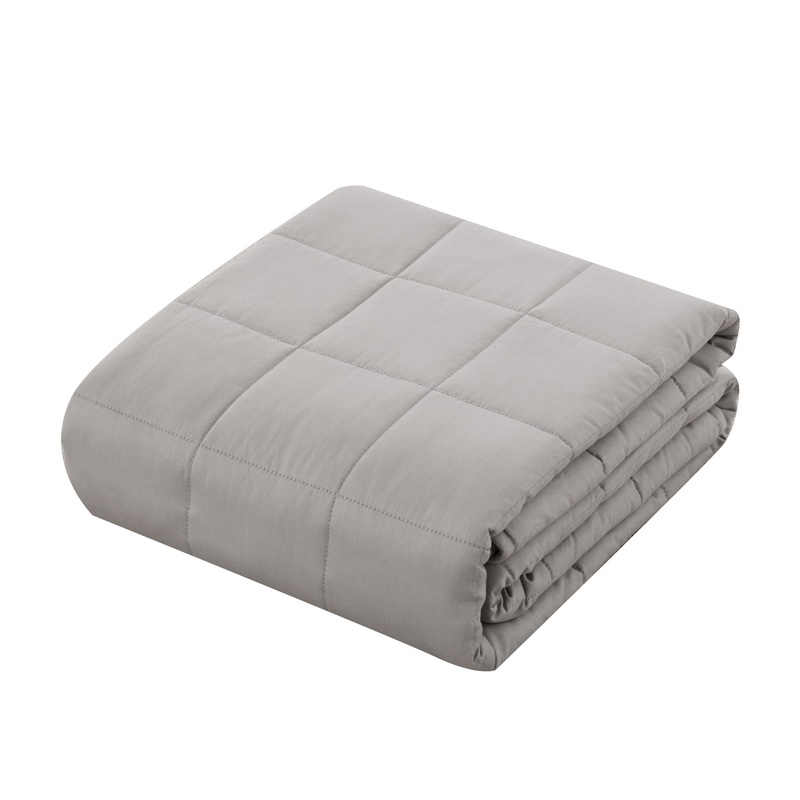
Removable Cover
You’ve found the perfect blanket, but you have mixed feelings about the fabric. Or maybe you have pets and the blanket is dry-clean only. Either way, a removable cover might solve your dilemma.
Some blankets already come with one, but in most cases, you will buy it separately. Before buying, make sure that the size is right and the fabric is machine washable.
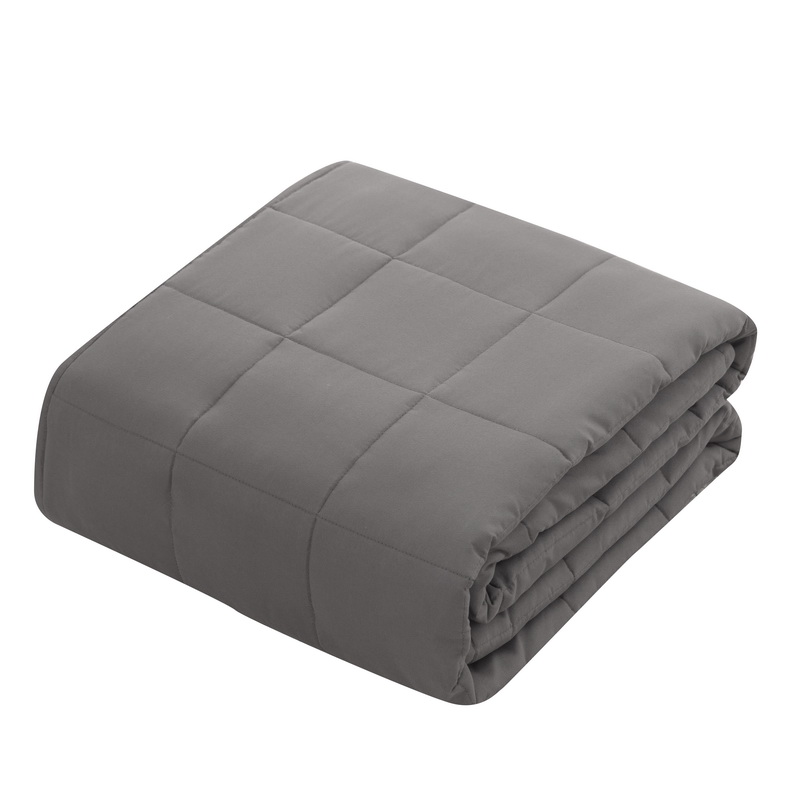
Our Top Picks
This list of recommended weighted blankets considers material, filling, cooling properties, and more to help you select the best weighted blanket for your sleep comfort.
If you need more information about them,please check the website address https://www.jueaihome.com/product-category/weighted-blanket/
